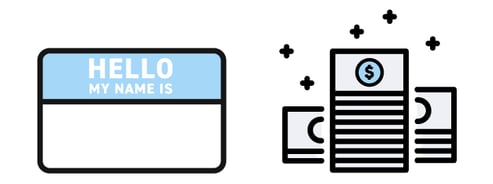With rising tuition costs and college degrees being less of a guarantee than they once were, more high school graduates are skipping design school and opting to dive right into the workforce. Even if you went to university, there’s a good chance you didn’t necessarily get a degree in design. If you find yourself in the increasingly common cohort of designers without design degrees, here are a few of the lessons you might have missed out on from school.

Your Network is Your Net Worth
Only about one in four college graduates are working in a field related to the degree they earned in school. College is about teaching you how to think for yourself and making lifelong friends, not gaining vocational skills that will be obsolete by the time you graduate. Ultimately, your professors and fellow students are your real job ticket, not your GPA. Fortunately, even if you skipped college and never got that networking opportunity (or you did go but built up a network in the wrong field), there are plenty of ways to build a network outside of college. You can join professional groups like the AIGA, or show up to free Creative Mornings talks. If there aren’t any design organizations in your area, get active on an online network, like Dribbble, Behance, or Reddit. Don’t restrict your network to other people in your field, either! Make friends with local business owners—you never know who’s going to need a new website or logo, and personal referrals give you the best chance of landing paid work.
Great Designers Steal - Smartly
Whether you’re designing a tea kettle, an ad campaign, or a cereal box, rest assured someone else has wrestled with many of the same challenges you are—there’s no need to reinvent the wheel. Copying is a way of seeing. As the film director Jean-Luc Godard once said, “It’s not where you take things from—it’s where you take them to.” When you take bits and pieces from different sources and mash them together, you could end up with a finished product that retains the best parts of your inspiration but adjusted to the restrictions of your particular project.
Without fellow students to look to for inspiration, designers outside of school have to find their own sources. Behance, Dribbble, Pinterest, and Are.na are great places to start from the comfort of your laptop, but try to get out in the real world, too, by skimming grocery store aisles or walking around your neighborhood. And remember, there’s a difference between copying (to learn) and plagiarizing.
Find Your People
Long hours in the design studio fosters healthy competition and pushes designers to make their best work. But trying to make your work look like everyone else’s can also backfire, causing you to lose your identity as a designer. Whether you’re in design school or not, take Brian Eno’s advice and find your scenius—a group of people you resonate with that can help you develop your best work. They don’t all necessarily have to be designers, either! Engineers, businesspeople, and even salespeople have the same capacity for creativity as designers, with perspectives and skills that can get you thinking about design problems in new ways.
Portfolio Reviews
In design school, your work is constantly subject to constructive critique by your peers and professors, helping you to get better at articulating and executing your ideas. Many design school grads remember school as a haze of caffeine, X-Acto knife cuts, crying, and impassioned arguments about fonts, punctuated by stressful group critiques.
Outside of school, you’ll undoubtedly get feedback from clients, managers, and customers. But it helps to share your work with other designers in your network who can help you get better at your craft, which isn’t always the same as working to please the people you work for. In the real world, your friends and frenemies are the best feedback you’ll ever receive.

So many design students get their first critique the second they pin a poster on the wall slightly askew. The lesson is simple: details matter. Grammar or spelling mistakes (peep the one above), a poorly scaled photo, stretched text—no matter how good your design skills are, you won’t get an “A” unless you take responsibility for all the details of a project, even if they’re not ostensibly design-related.
Whether you’re a bonafide Art School Kid™ with a six-figure loan or skipped college to hone your craft via YouTube university, Artisan connects passionate and talented designers with great companies and projects.




/Ask%20a%20Recruiter%20Blog.jpg?width=436&height=255&name=Ask%20a%20Recruiter%20Blog.jpg)